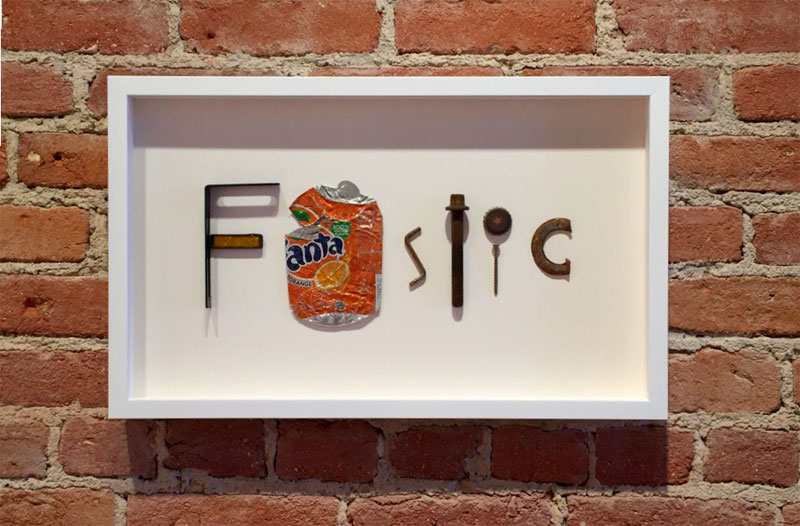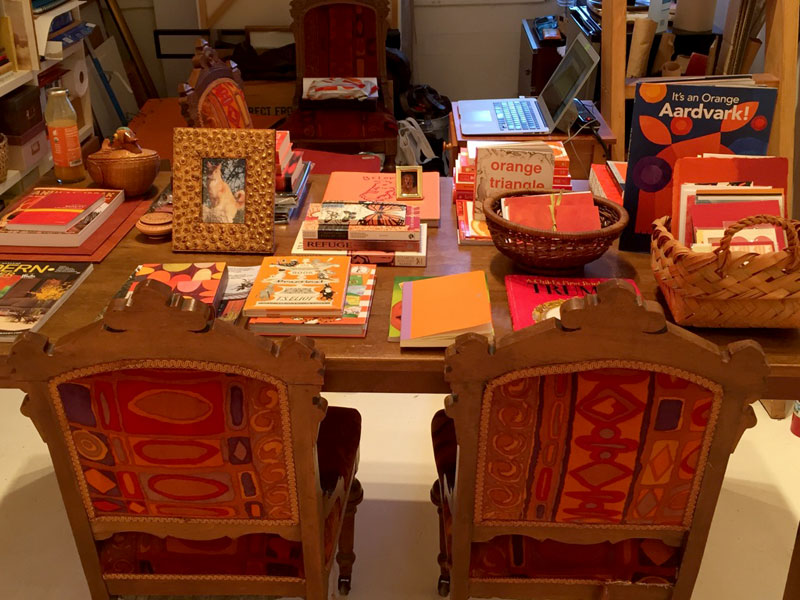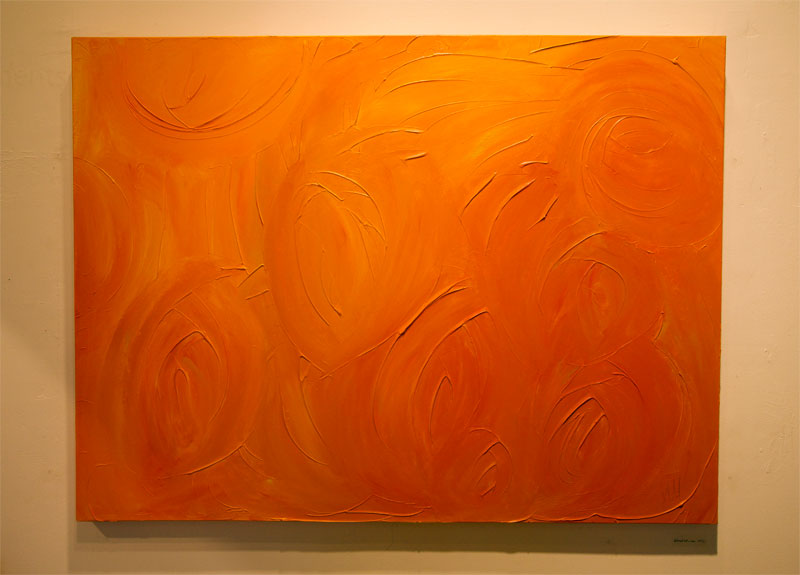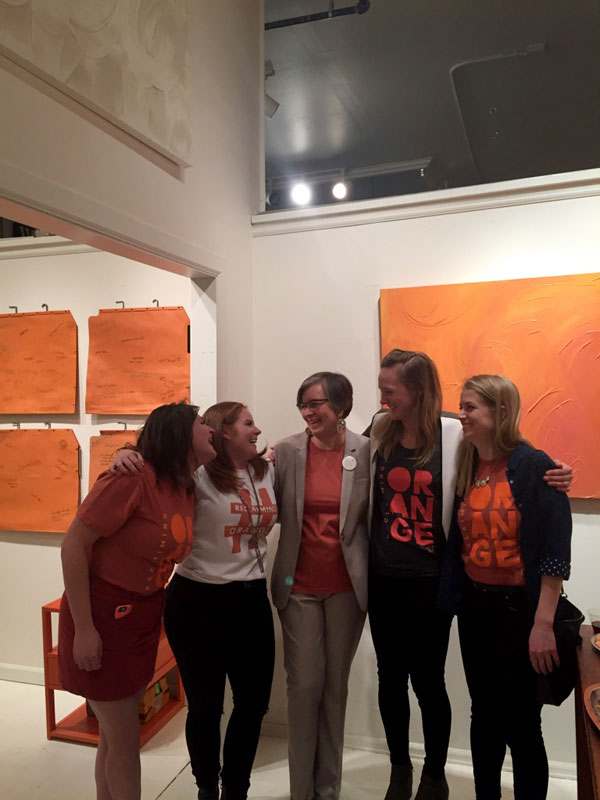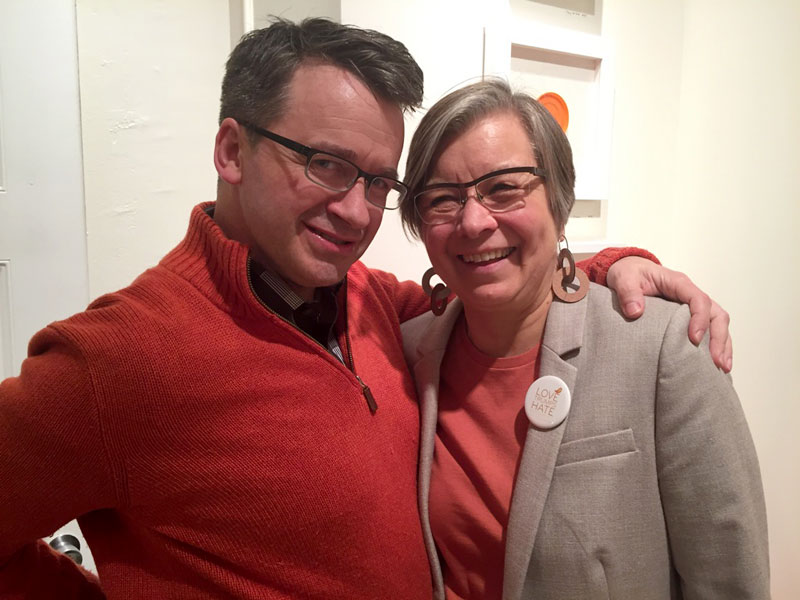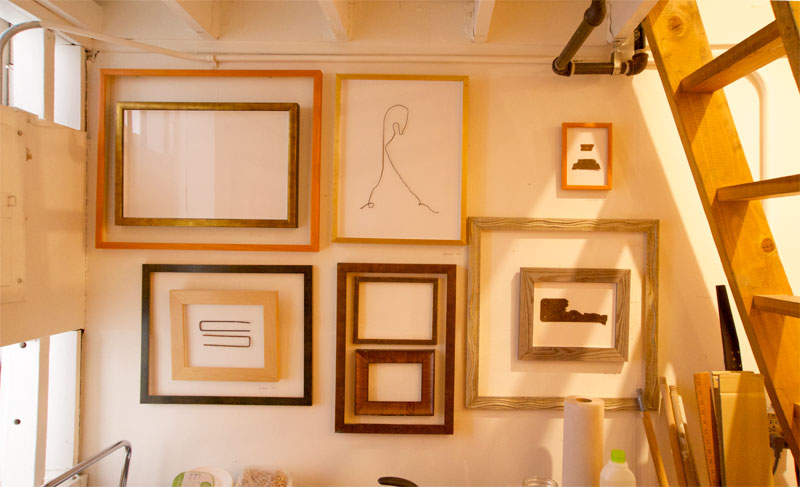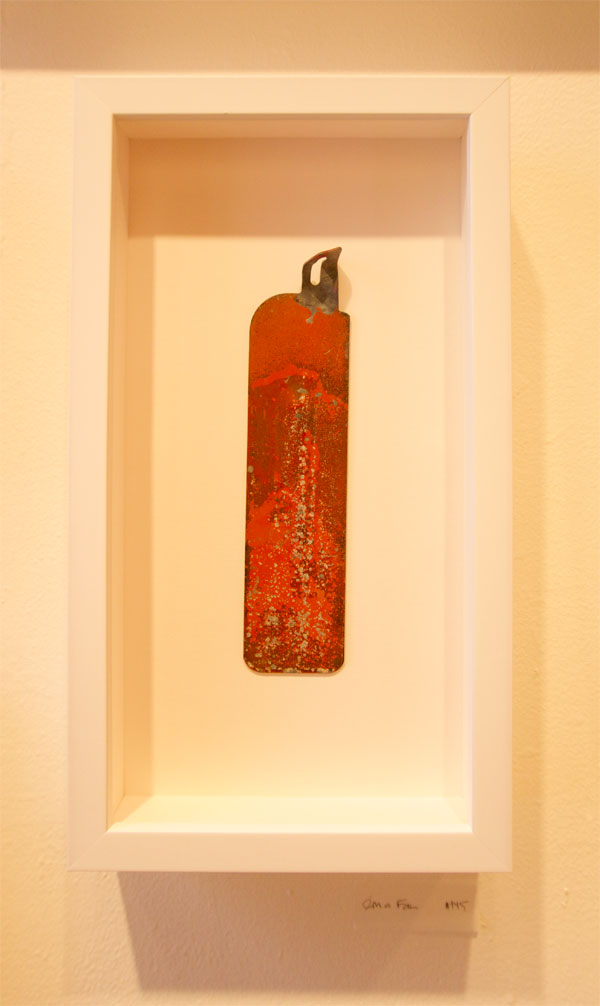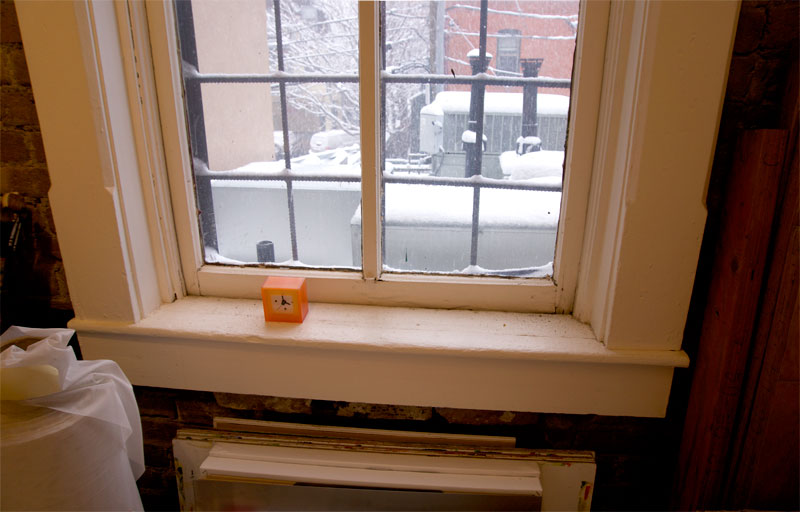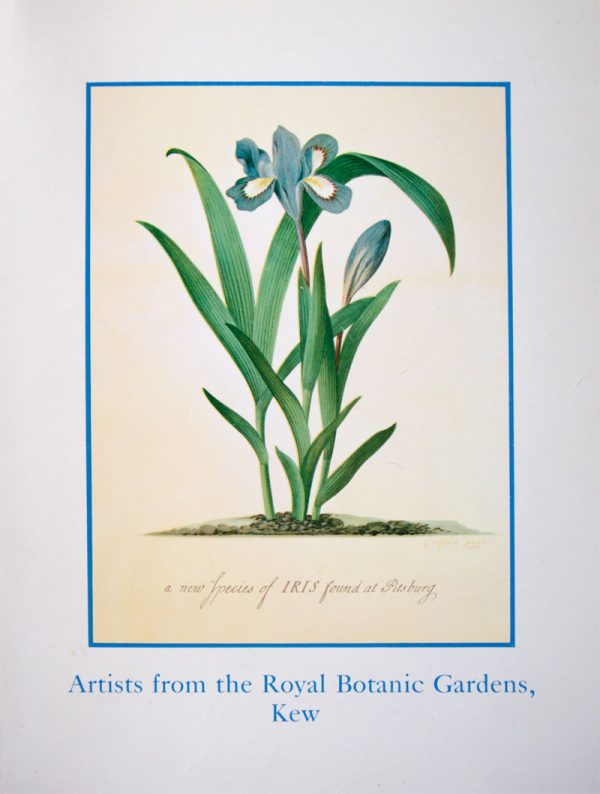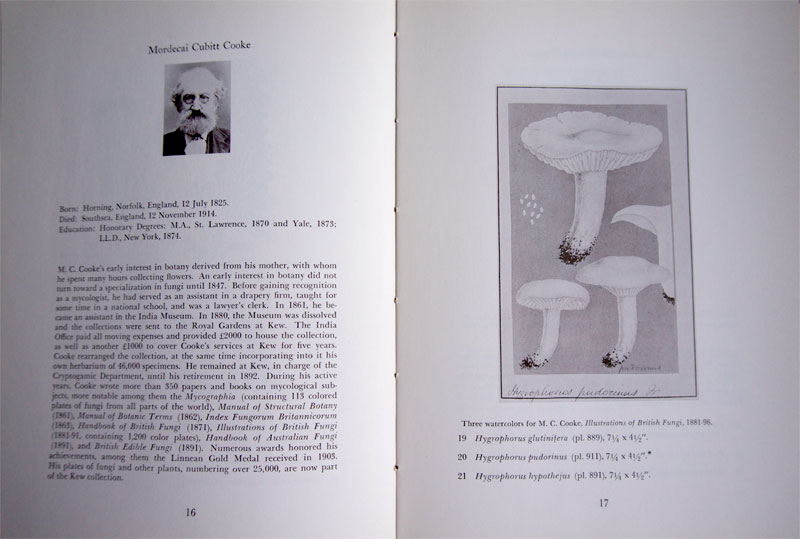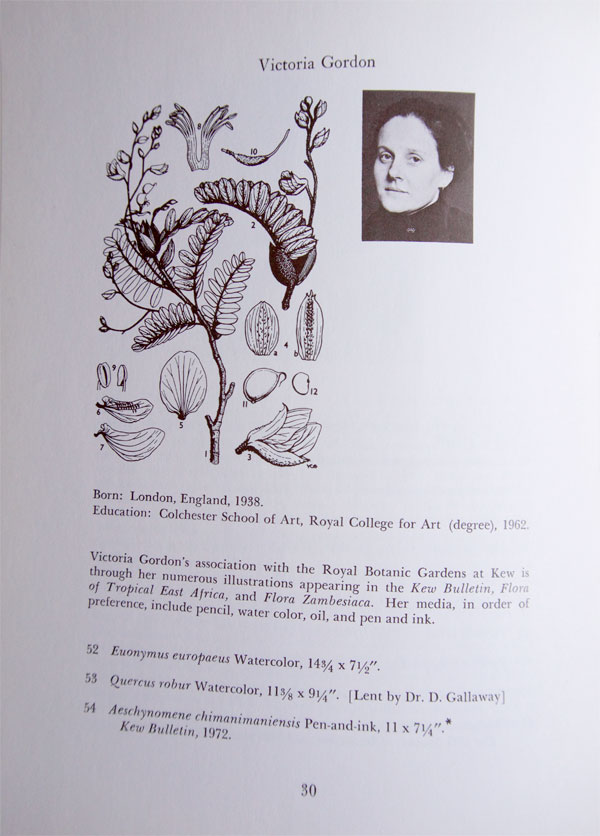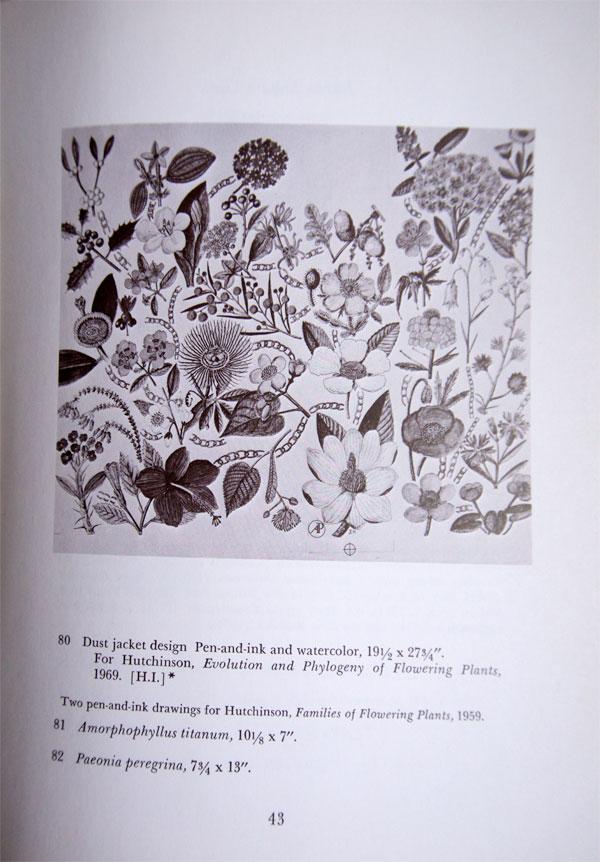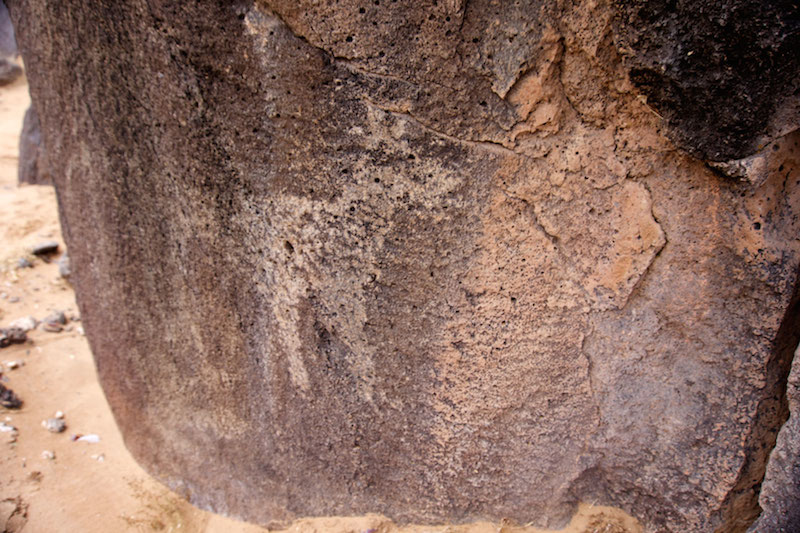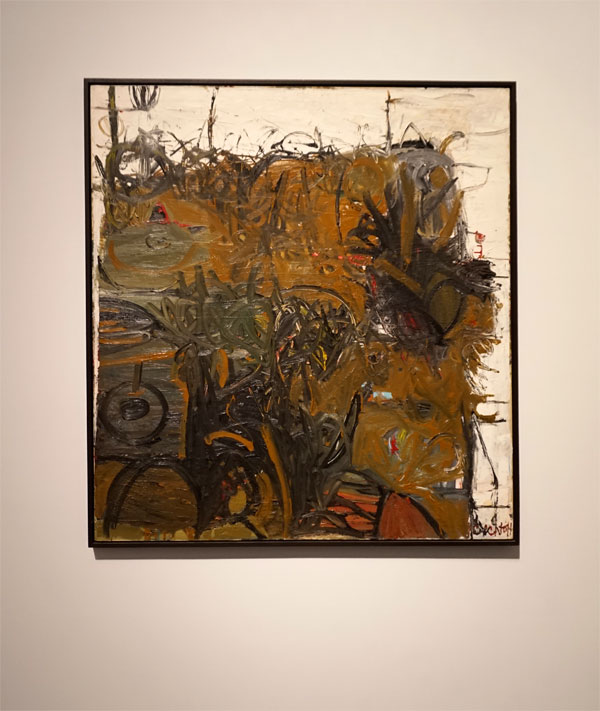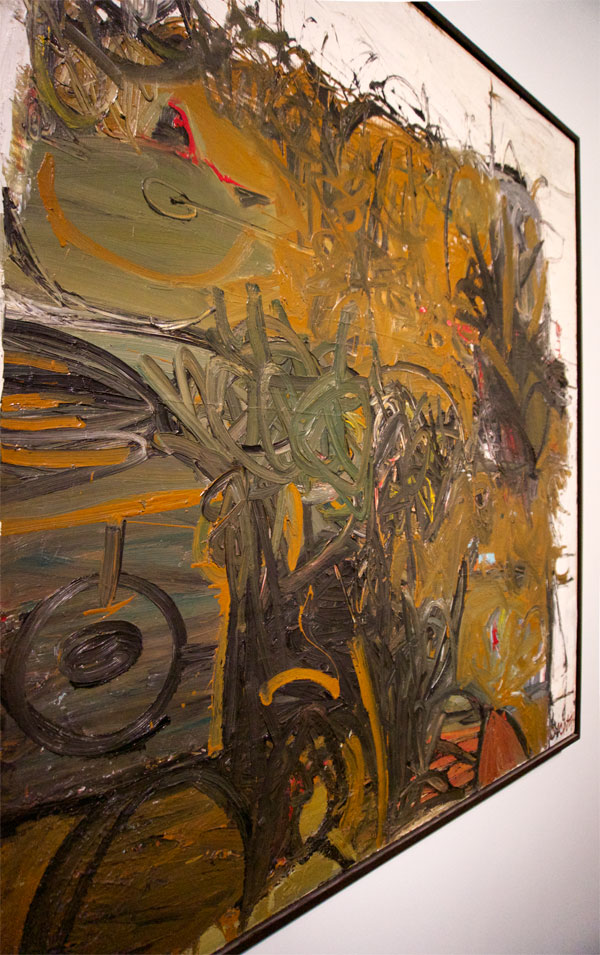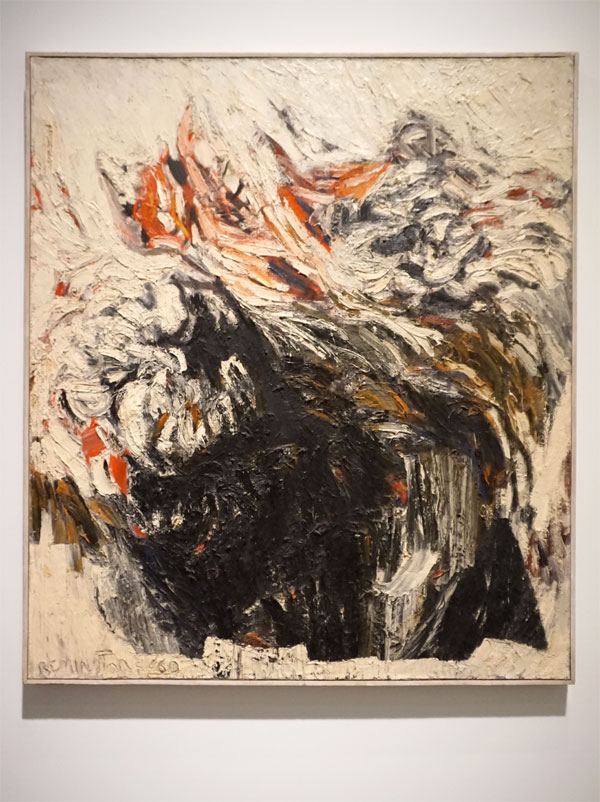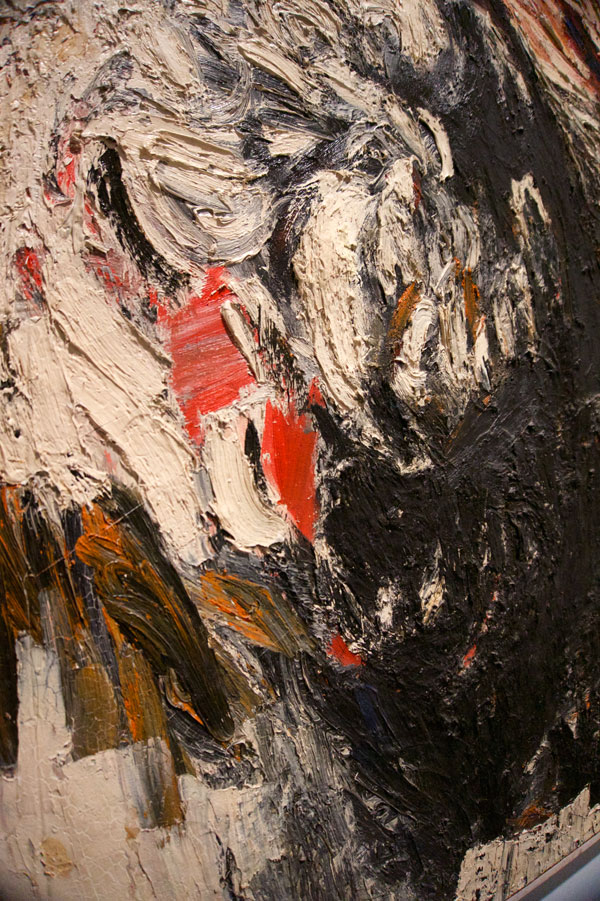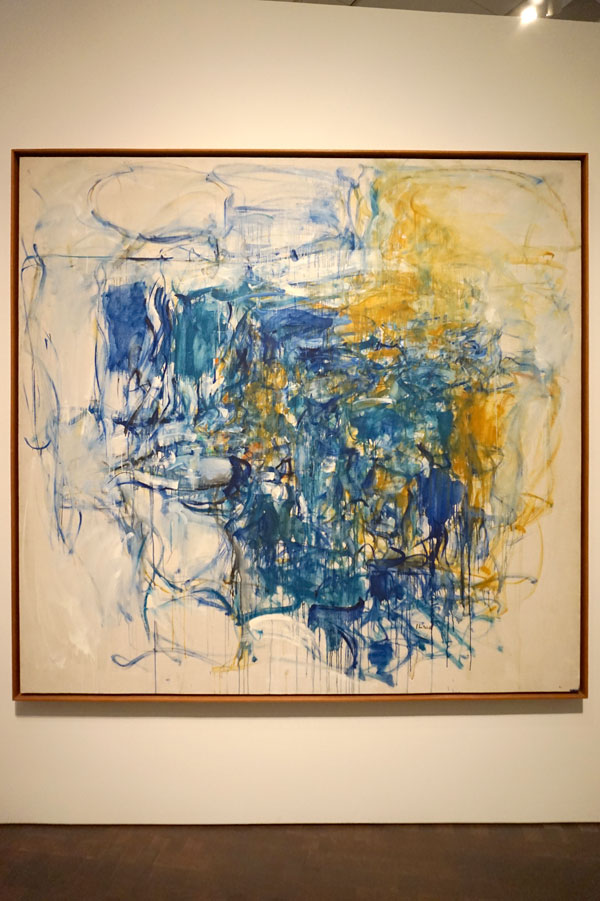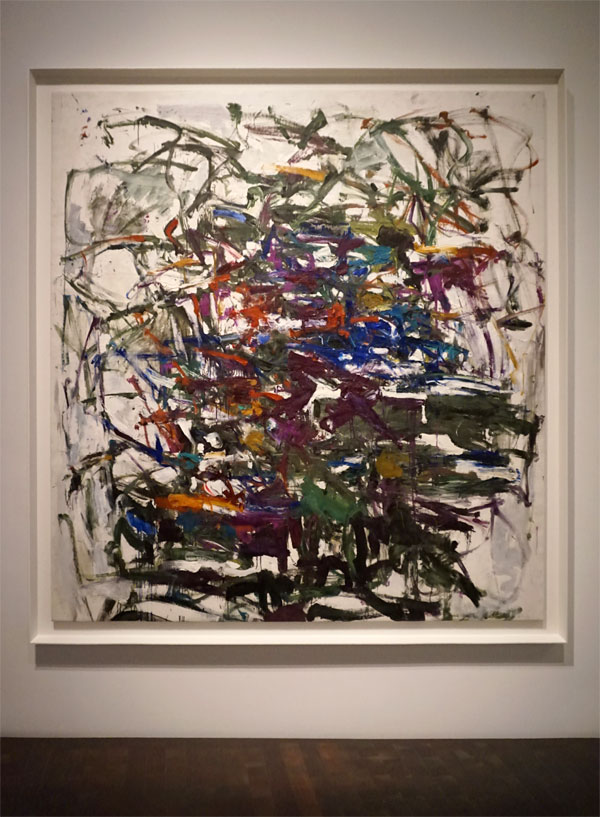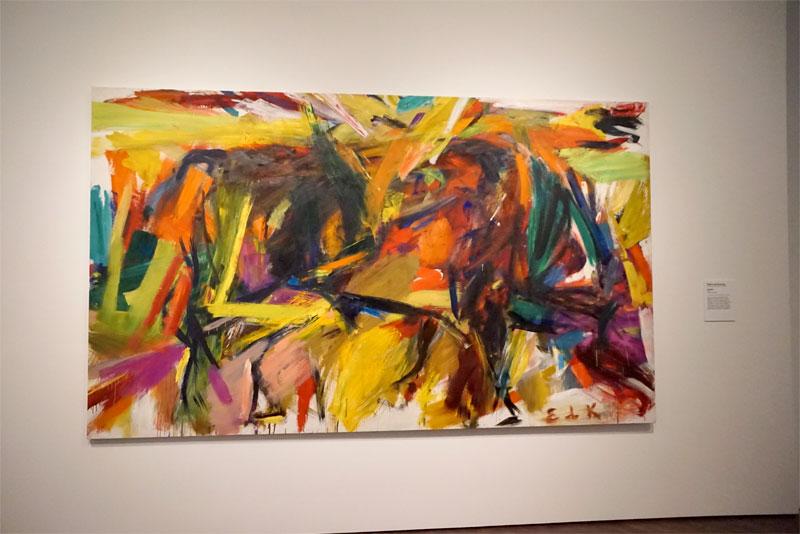If you have time for just one studio visit during Boulder’s Open Studio’s 2019 check out the Eldorado Springs Art Center. ESAC is a studio and gallery compound established by sculptor Giuseppe Palumbo in 2000. Stop by from noon to 5:00 pm on October 12th and 13th to visit resident artists Dona Laurita, Julie Maren, and Palumbo in their studios. Linger to stroll the sculpture garden and soak up the artwork on display in ESAC’s community gallery spaces.
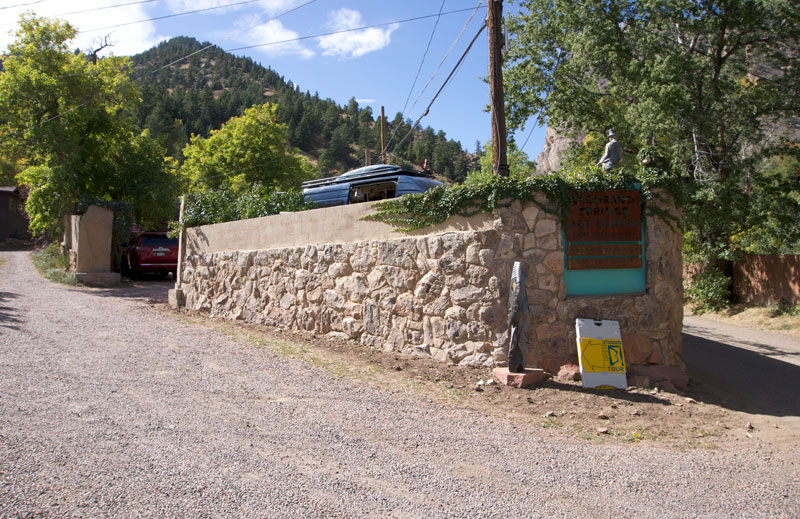
ESAC is located at 8 Chesebro Way in Eldorado Springs, Colorado. Look for the stone wall with the turquoise sign on the south side of the unpaved road that leads to Eldorado Canyon State Park.
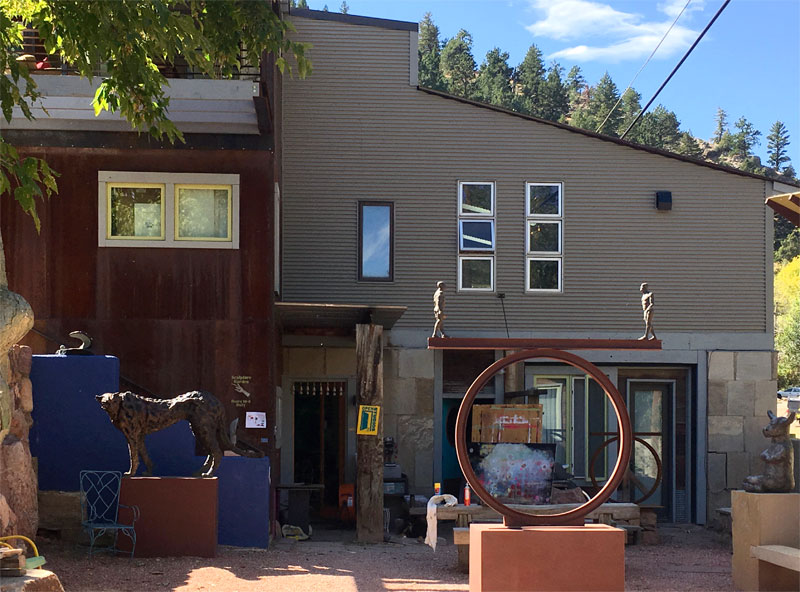
ESAC’s main structure and lower sculpture garden viewed from the Chesebro Way entrance/parking area on the east side of the building
The crumbling canyon topography and sandstone walls, pedestals and pebbles that surround and make up ESAC add poignancy to emotionally evocative work.
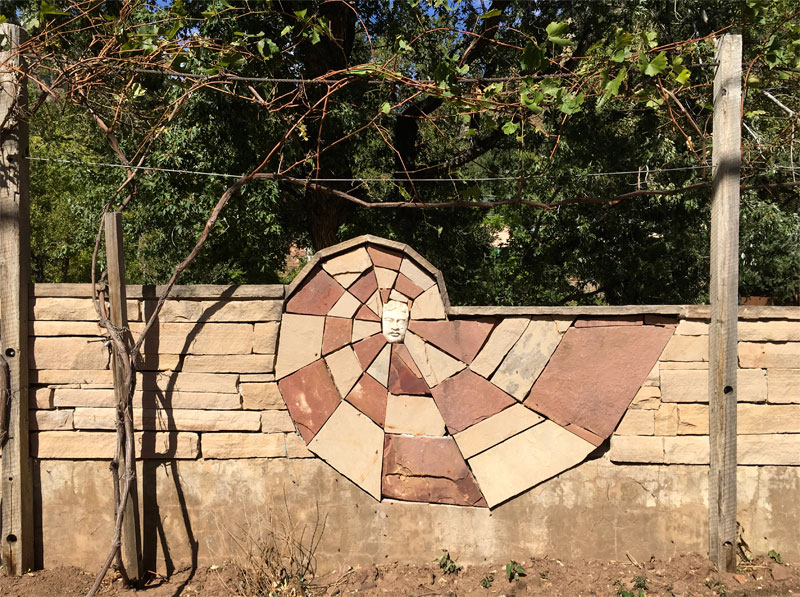
A spiral inclusion by Palumbo embedded in the sandstone wall the border’s the north edge of ESAC’s lower sculpture garden.
There’s an awareness of geologic time and a sense that even durable objects constructed of stone, bronze and wood are impermanent.
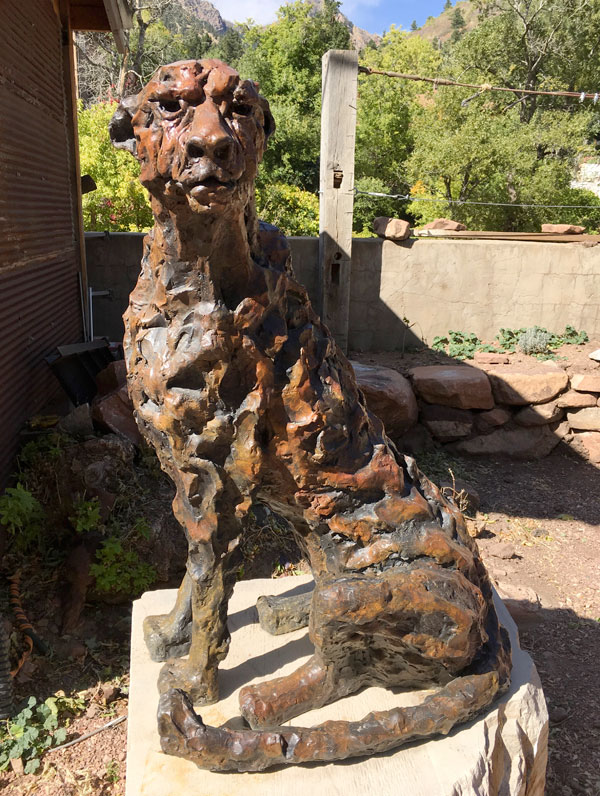
“Sitting Cheetah” by Giuseppe Palumbo has an achingly human face.
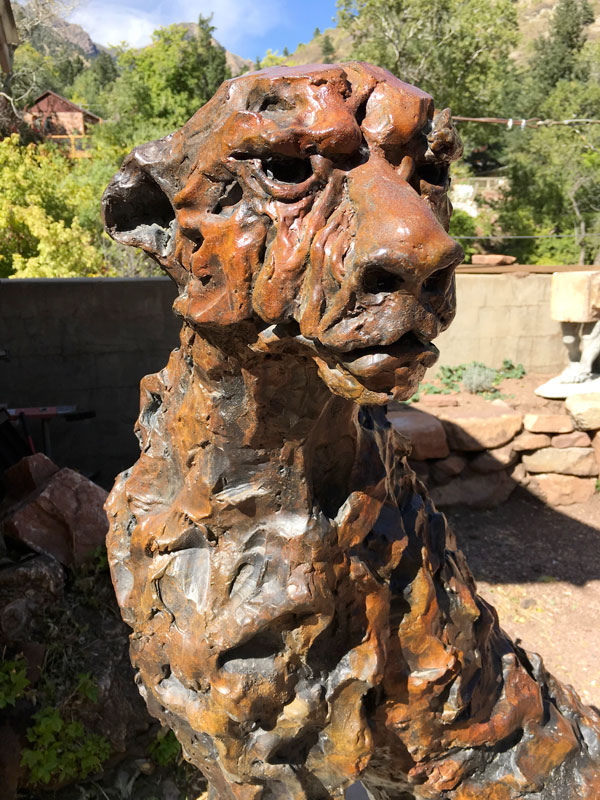
“Sitting Cheetah,” Giuseppe Palumbo
The sculpture garden is loaded with art and cleverly place architectural details and vantage points. I won’t ruin the delight of you discovering these details on your own by showing all my favorites here.
Julie Maren’s studio is accessible on ESAC’s lower level. Look for the tasseled doorway that leads to two green paintings under the light of a crystal chandelier.
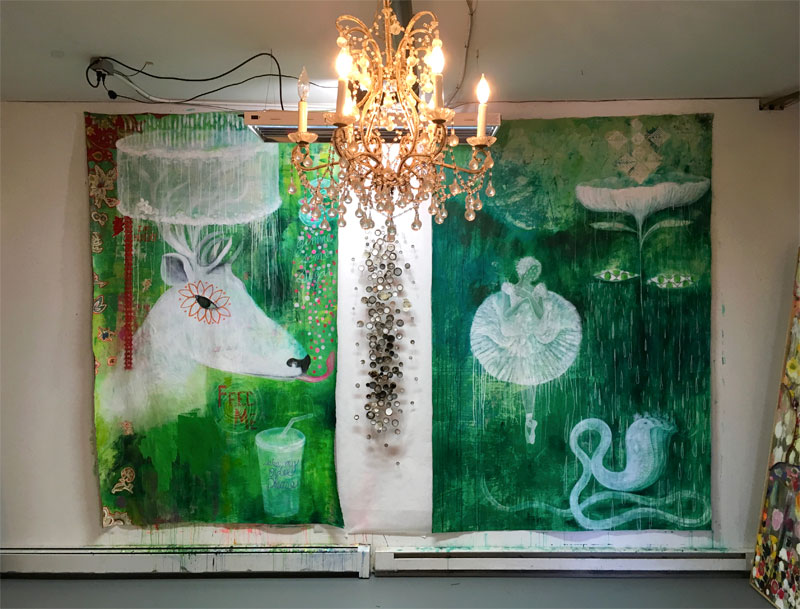
Julie Maren’s paintings offer viewers a chance to contemplate dreamlike symbolic landscapes
There is a stairway to the left of Maren’s entrance that leads to the second level of ESAC’s expansive sculpture garden. Check out the stone carvings by Collen Nyanhongo along the way.
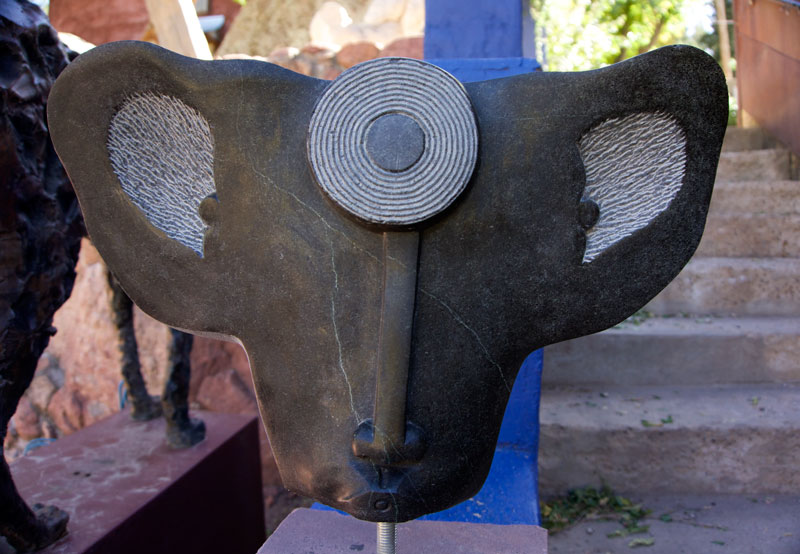
Stone carving by Collen Nyanhongo
Dearly beloved, we are gathered here today to get through this thing called life,
says Prince quoted in purple paint on the south wall of the upper sculpture garden.
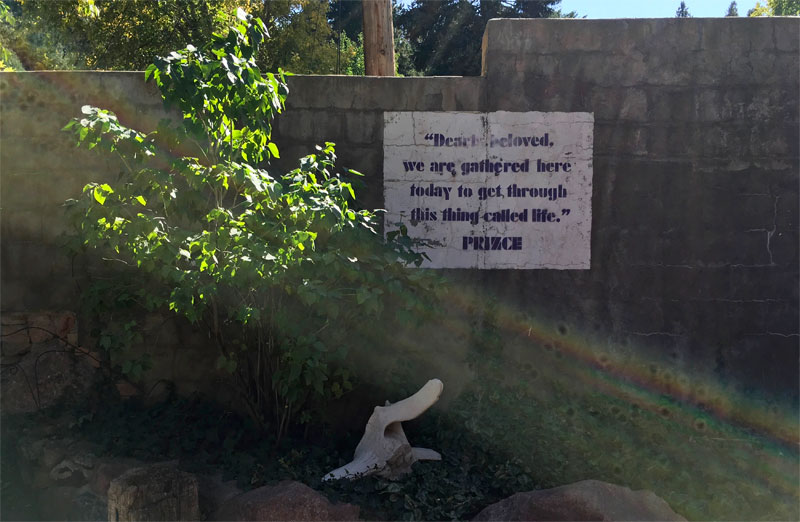
Bands of afternoon light rake the upper level sculpture garden at ESAC
I had a great experience connecting with the ESAC community earlier this summer as part of the Bridges show. While Bridges wrapped in September you can still catch some of that work including five of my photos from Future Perfect. Look for them lining the entry to ESAC’s main event space.
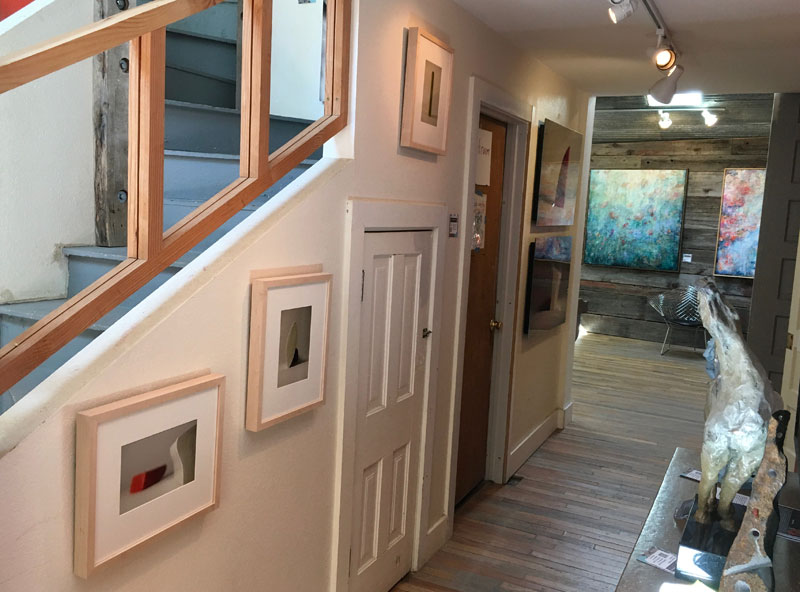
Five photographs by Laura Tyler at ESAC
Photographer Dona Laurita manages two spaces at ESAC, her own private studio plus a collective gallery space, Dona Laurita Collective.
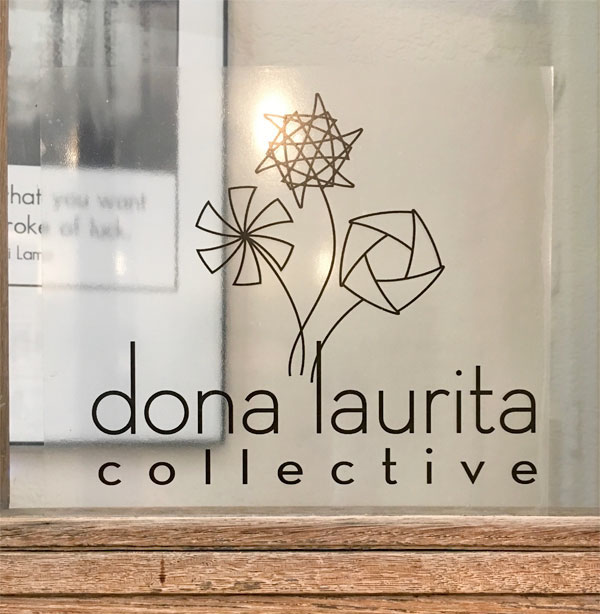
View work by Tracy Barnes, Jody Bill, Dona Laurita, and more at the Dona Laurita Collective
See Collective painter Tracey Barnes’ gauzy fields of color in ESAC’s main gallery and event space.
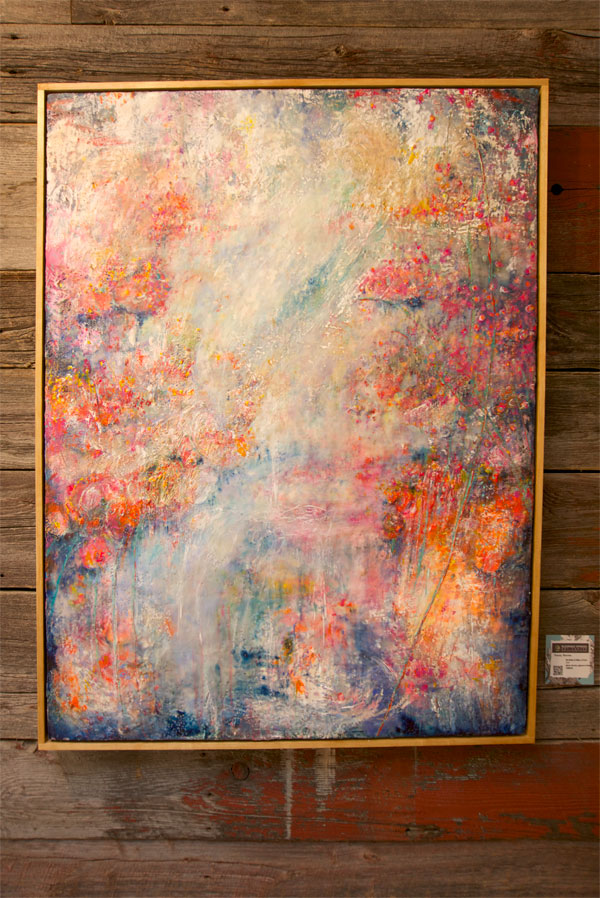
“The Realm in Fullness of Grace” by Tracey Barnes, plaster, beeswax, pigment on board
Here are a few more snapshots of ESAC’s main gallery and event space. The wonderful, large magical realist paintings above the sofa and hanging on the orange wall are by Frank Sampson. You can see another of Tracey Barnes’ paintings on the back wall bookended by sculpture by Giuseppe Palumbo.
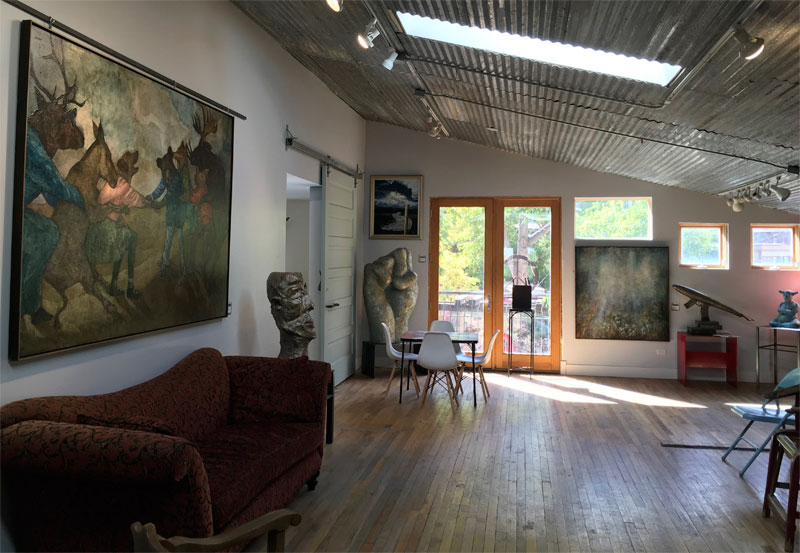
Looking toward the west wall in ESAC’s main gallery/event space
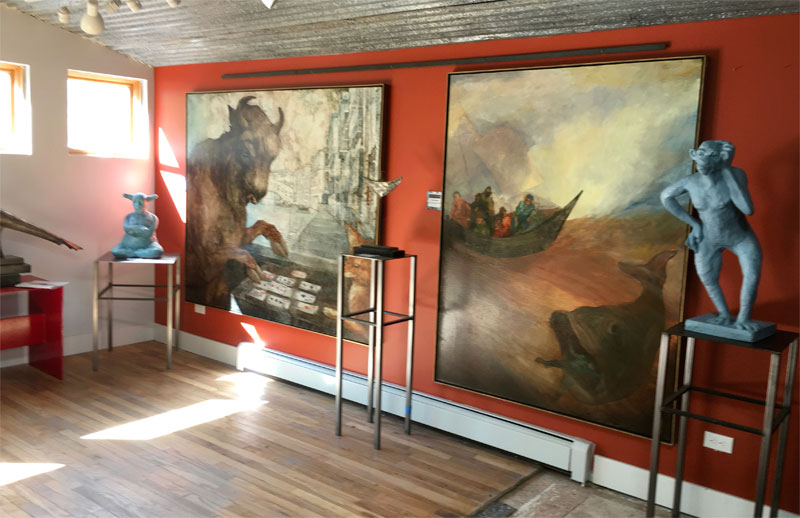
“Jonah and the Whale” (right) and “Americans in Venice” by Frank Sampson
Turn around after taking in Sampson’s paintings on the orange wall to find Giuseppe Palumbo’s sublimely lit studio space.
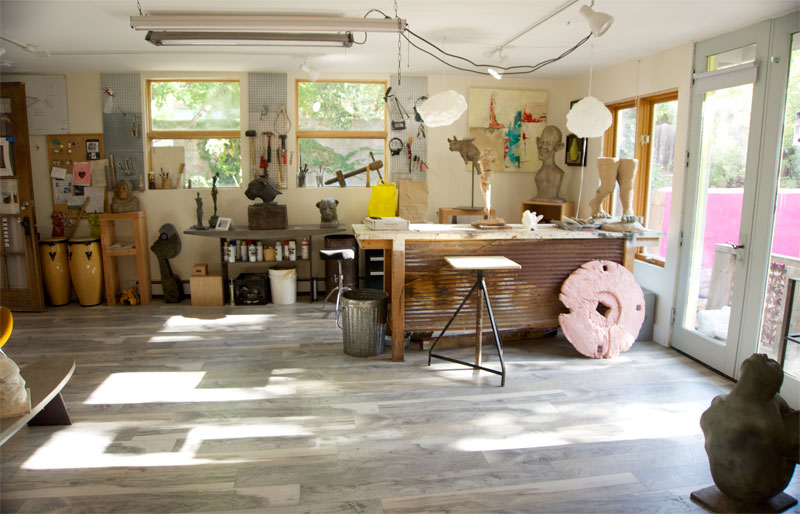
Giuseppe Palumbo’s studio
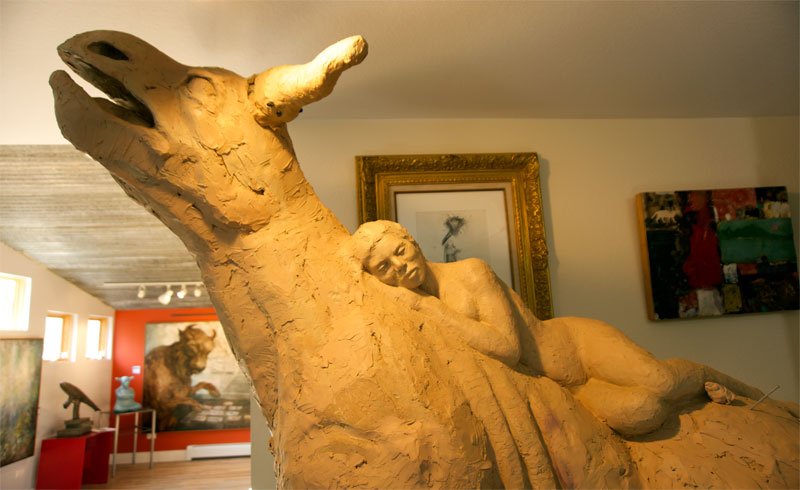
Work in progress by Giuseppe Palumbo
Another view of the hallway angling back toward the stairs. The two photos on the right are mine. The painting on the left is by Julie Maren.

“Novitiate” and “Patient” (right from top to bottom), photographs by Laura Tyler, the painting on the left is by Julie Maren
Drunk on color, texture and feeling? Wait, there is more. Go upstairs to visit Dona Laurita’s studio. Here’s a snapshot that shows a glimpse of a new series in progress, images printed on veil-like pieces of silk. Lift the veils to deepen and reveal.
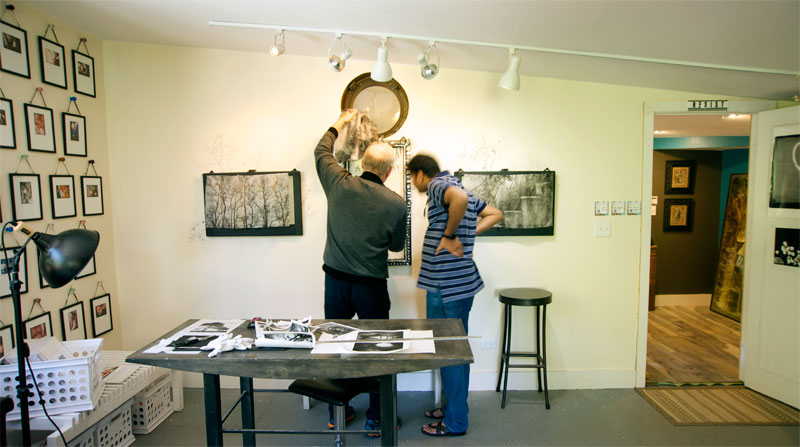
“The Thin Veil Between Lift and Death” by Dona Laurita, images from film circa 1994-1998 on silk, vintage windows, black paint, silver leaf, glass, glitter, mica, wire, charcoal and pencil
If weather allows, take a moment to enjoy the balcony on the east end of Laurita’s space. It offers a bird’s eye view of the sculpture gardens below and is also a nice place sit, talk about art and think.
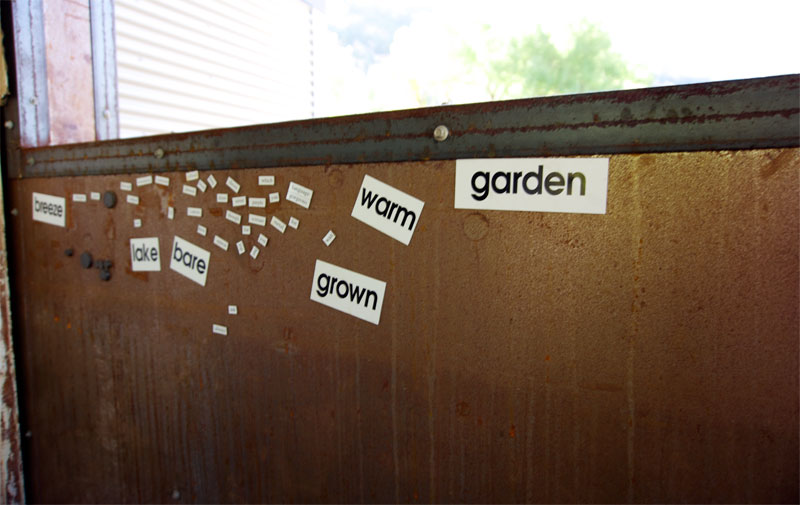
Also showing at ESAC this weekend (October 12th and 13th): Open Studios painter Antonio Arrieta and ceramicist Joy Alice Eisenhauer whose undulating plates offer a fantastic complement to Maren’s and Barnes’ paintings. (I’m sorry I was unable to include images of their work in this post.) Join us and plan to spend an hour or two at ESAC where there’s an abundance to see, feel and do.
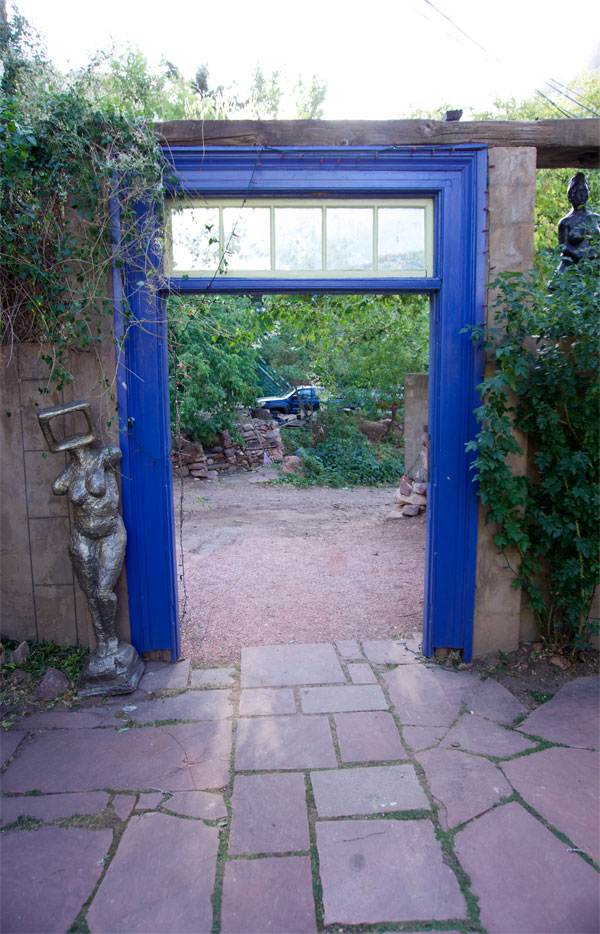
Exit the upper level of ESAC’s east-side sculpture garden through the colbalt gate and follow the path down for more sculpture and vantage points to the west.
